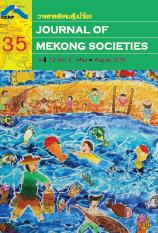The History of Rubber in Southeast Asia and the Mekong Subregion: Changes in Geographical Locations of Supply and Demand
Main Article Content
Abstract
Rubber entered Southeast Asia and the Mekong subregion because of changes in the geographical locations of supply and demand, because rubber was made into goods through technological processes to respond to industrial development. Therefore, the history of rubber entering the region can be divided into two phases. Phase 1 is the changing of geographical locations of supply and demand from the western to the eastern hemisphere, as rubber entered Southeast Asia. Phase 2 is the entry of rubber into the Mekong subregion; changes in the geographical location of supply from the archipelago and coasts to the inner area of the continent; from appropriate areas to those which were thought to be not appropriate.
Article Details
How to Cite
Thongpan, S. (2016). The History of Rubber in Southeast Asia and the Mekong Subregion: Changes in Geographical Locations of Supply and Demand. Journal of Mekong Societies, 12(2), 187–214. Retrieved from https://so03.tci-thaijo.org/index.php/mekongjournal/article/view/65485
Section
Articles

